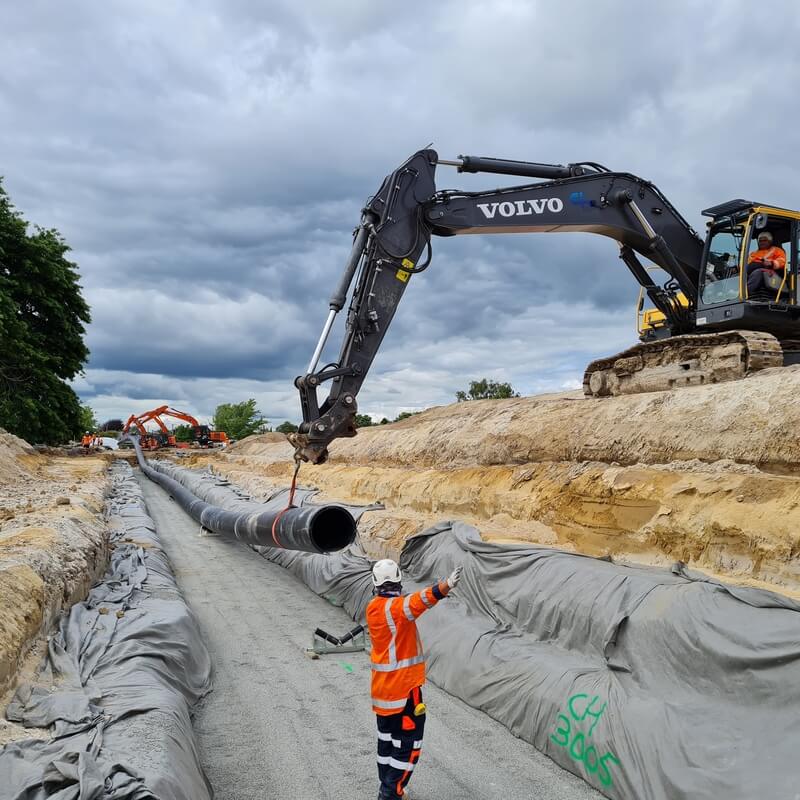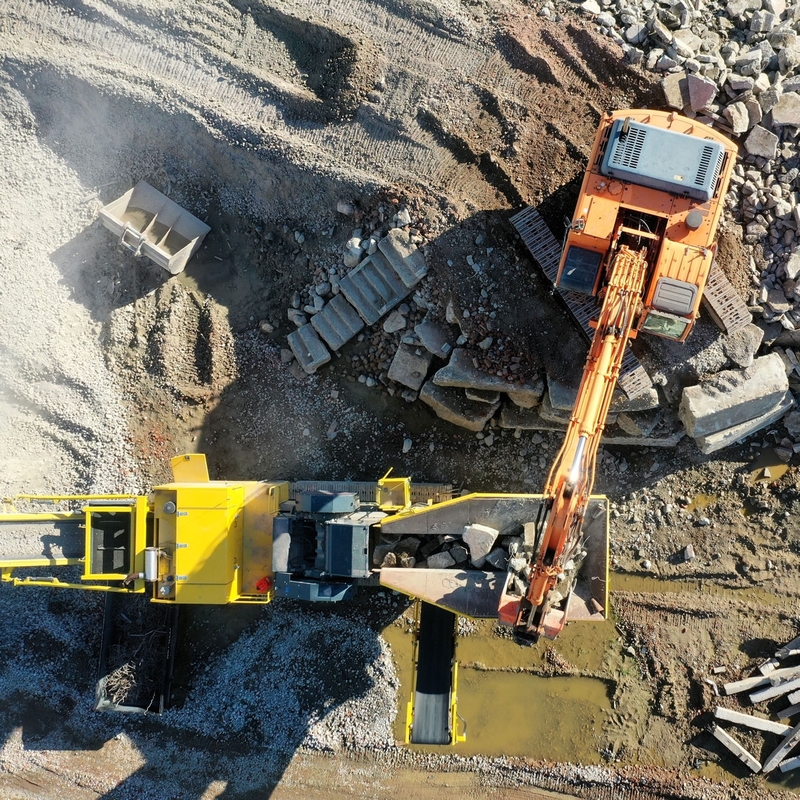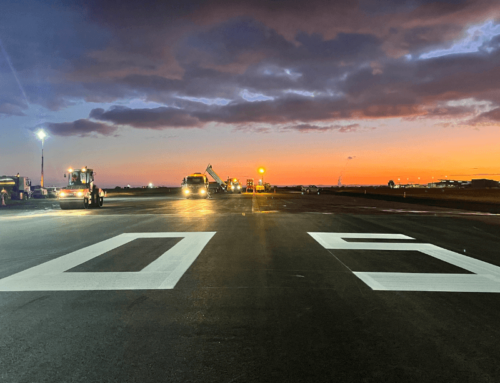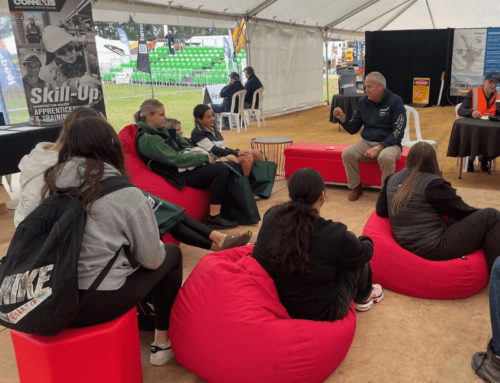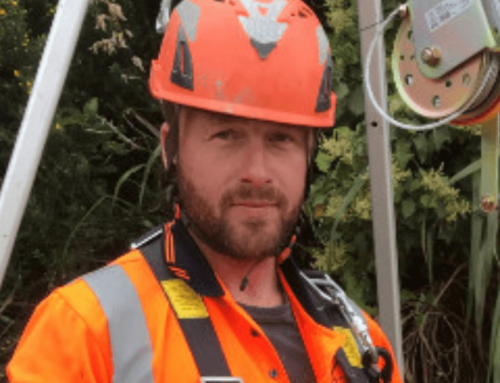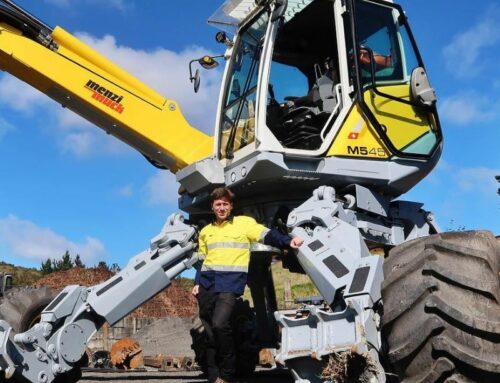New Zealand’s civil construction industry is being transformed as many of the country’s best known and most respected players begin the seismic shift to a greener way of operating.
Infrastructure construction teams have always reshaped the world around us, physically moving tonnes of earth and redirecting water with heavy equipment. But the way the industry works has changed significantly in recent years. From hybrid-powered excavators reducing fuel burn to waste minimisation initiatives diverting tens of thousands of tonnes of construction waste away from landfills, the industry has come a long way from the one your grandad used to know.
This month we look at some of the changes and approaches that are turning heads in New Zealand by transforming concepts and ideas around environmental protection and sustainability into realities.
Machinery powered by renewable energy
One of the big shifts taking place right now is in heavy machinery and plant. Electric power and other renewable fuel sources are well proven for light vehicles but they haven’t been so easy to implement in some of the heavier vehicles and machinery commonly found in civil construction.
However, that is slowly changing, with fresh technologies making it possible to achieve a transition some once thought would never come.
Last month, essential infrastructure services provider Ventia became the first in New Zealand to start using a new Komatsu Hybrid HB365LC-3 excavator to quarry aggregates for roading at its quarry at Puketona, between Paihia and Kerikeri in Northland.
The new machine uses an electric slew to rotate its cab left and right, and a fuel-efficient Tier 4 diesel engine to create hydraulic power for its tracks, boom and bucket.
Ventia Transport Operations Regional Manager for Northland Neil Cates says the result is an excavator that provides fuel savings of up to 20 per cent compared to similar non-hybrid machines.
“We looked at the hybrid option and quickly saw that it has productivity benefits: much more powerful slew, faster cycle times and great fuel savings,” Neil says.
“Our main goal in purchasing this equipment has been to decrease downtime, increase productivity and decrease emissions.”
The purchase is part of a Ventia initiative to transition away from fossil fuels for its entire fleet, including converting all light vehicles to EVs or hybrid by 2030. Ventia has also committed to energy efficient solutions for all the plant, excavators, utility vehicles and trucks used by its team of more than 15,000 employees in New Zealand and Australia.
Many others in the industry are exploring options to convert their fleets to hybrid and EV technology, with the Low Emission Vehicles Contestable Fund getting behind a Dempsey Wood pilot project announced this week to convert a traffic safety vehicle to electric.
Dubbed ‘the Big EV’, Dempsey Wood’s new Isuzu FSD700 Auto operates with a SEA-drive 120b battery and is designed to substantially reduce operational costs and carbon dioxide emissions while providing for Level 1 and 2 traffic management needs.
Biodiesel is also being used in some quarters of the industry, with Fulton Hogan’s Green Fuels business powering its Auckland, Christchurch, Central Otago, Dunedin, and Nelson.
Sustainable worksite practises for a new era
The industry’s sustainability practises are shifting too. On-site recycling stations allowing workers to dispose of concrete, plastic bottles, glass and other materials are now common, and having a sound environmental plan in place is now a key requirement for nearly all project tenders.
“In today’s times, we are much more environmentally conscious and aware of the world around us, partly because of things like social media which mean everyone has access to so much more information,” says Jamie Campbell, Founder and Managing Director of civil construction business CB Civil.
The company recently won awards from the Waikato Branch of Civil Contractors New Zealand for its work trenching and laying a 5.5 km dual wastewater pipeline on the Peacocke Northern Transfer Mains project for Hamilton City Council.
CB Civil pioneered industry-leading sustainability practises on the project, resulting in huge savings in water use, as well as less than 20 per cent of the project’s waste going to landfill.
“We separated all waste materials on site – concrete, plastic, glass bottles, paper – and made sure it was managed appropriately and recycled wherever possible,” Jamie says.
“But that is becoming more common. What was different was our use of alternative materials and our recycling of mud and water.”
Building much of the pipeline required trenching, and then backfilling once the pipe was installed. Rather than importing material from elsewhere, CB Civil was able to reuse the material they had already dug up for a third of the backfill. A chip seal product from a local quarry, which would otherwise have gone to waste, was used for hard-fill bedding and surround of the pipes.
“The material is usually a specifically designed crushed aggregate but we sourced a reject chipseal that didn’t meet the specifications for roads and then tested it, gained approval, and used it for the entire length of the pipeline.”
More big wins were achieved during directional drilling, which was used in some sections of the pipeline to create an underground cavity when trenching from above is not desirable. This involves putting rods into the ground and then thrusting water through them at high pressure to lubricate the soil and drill through it. Bentonite is added to the mix to ensure the cavity that has been drilled holds up, creating a “mini underground tunnel” that pipes can be laid through.
Jamie says this is typically a water intensive process. The dirty water is usually sucked up by a sucker truck and removed from site for disposal. However, CB Civil used a special mud recycling unit on the Peacocke project, allowing the dirty water to be processed on site and used again – saving hundreds of thousands of litres.
“It was a project that I was fortunate enough to lead, and I really wanted to use it as an example and be very good in every department. The focus on sustainability was a way for us to live one of our key values,” Jamie says.
Getting stuck into waste minimisation, and conservation
The quest for a more sustainable future isn’t one that can be achieved alone. To that end, many civil construction companies are creating their own waste processing arms and working with their communities to achieve waste minimisation goals that are epic wins for all of us.
A prime example is Central Environmental, which was started in 2020 by Central Demolition to recycle material from worksites for use elsewhere in the industry.
Central Environmental receives waste concrete and hot mix from Wellington, Manawatu, Taranaki, Hawkes Bay, Rangitikei and Central Plateau, before crushing the materials at its site in Feilding and repurposing them into usable aggregates that are sold at competitive prices.
Central Environmental Director Ian Butcher says the company processed more than 80,000 tonnes of concrete and hot mix in its first year (2020), and that is only increasing.
“We are processing everything we can get our hands on. The aggregates we are producing for re-sale are in huge demand for roading and other projects at the moment.”
The waste material they take comes from all quarters – demolition projects, major construction projects like the redevelopment of Ohakea Air Force Base, building sites, and even mums and dads who drop waste concrete off after home and backyard DIY projects.
The company’s concrete crushing equipment is also portable, allowing it to travel to projects to crush unwanted concrete on-site before it is taken away.
Ian says Manawatū District Council has supported Central Environmental through a partnership, The council has allowed Central Environmental to get set up and operate on council-owned site, which Ian and his team remediated, in exchange for preferential rates for the council on aggregates needed for roading projects that benefit its communities.
“I can’t speak highly enough of the council – they have been supportive all the way through,” Ian says.
Some might think it would be more common for a civil construction company to start a sustainability off-shoot than for an environmental organisation to be the owner of a business of civil construction. But in the South Island, the latter is true.
Isaac Construction has grown into a powerhouse of the South Island civil construction industry, but the company is in fact largely owned by the Isaac Conservation and Wildlife Trust and its profits go towards the Trust’s mission.
The Trust now manages a site spanning some 1,100 hectares, which includes 85 hectares of reclaimed quarry, an area of native forest, and waterways ideal for freshwater species. It also undertakes a specialised captive breeding programmes for endangered New Zealand native birds in close collaboration with the Department of Conservation.
It’s an epic story, that shows the difference that can be made with vision and a creative approach.
As technology continues to improve and environmental awareness of New Zealanders continues to develop, who knows what kind of sustainable solutions we will see in civil construction in the years ahead?



